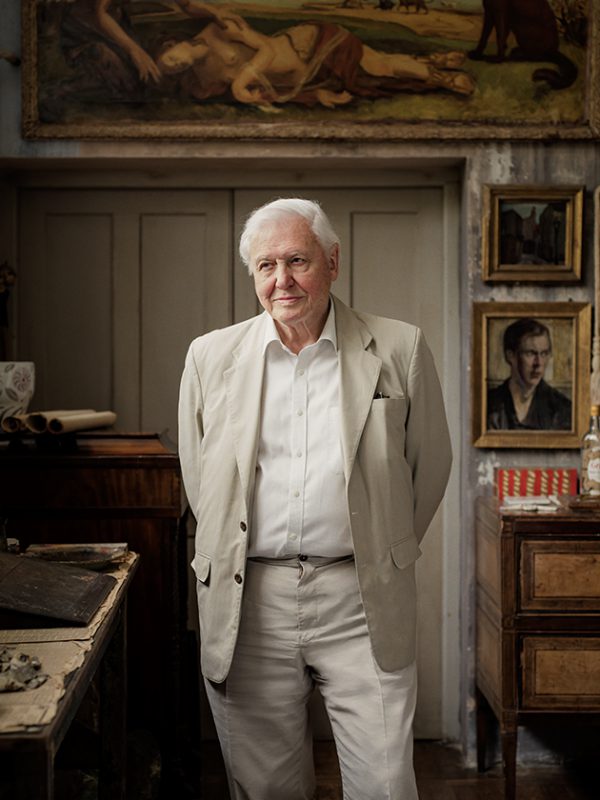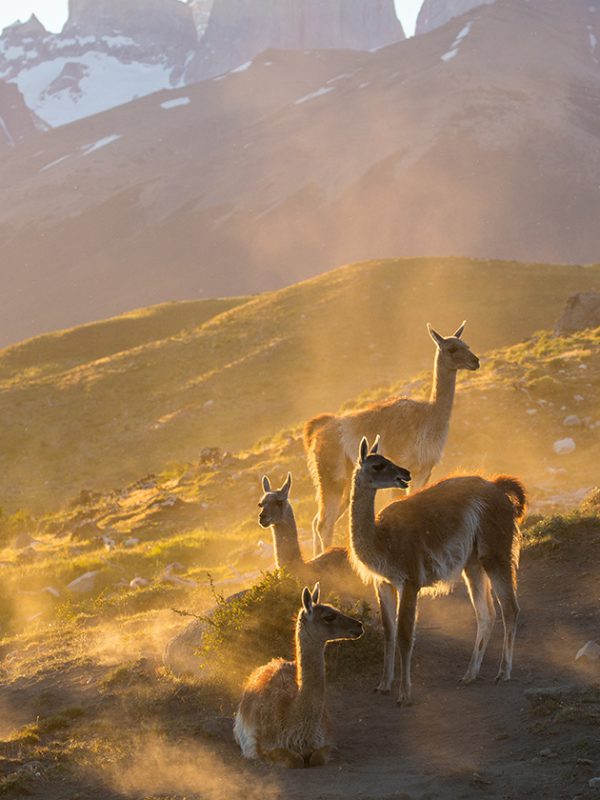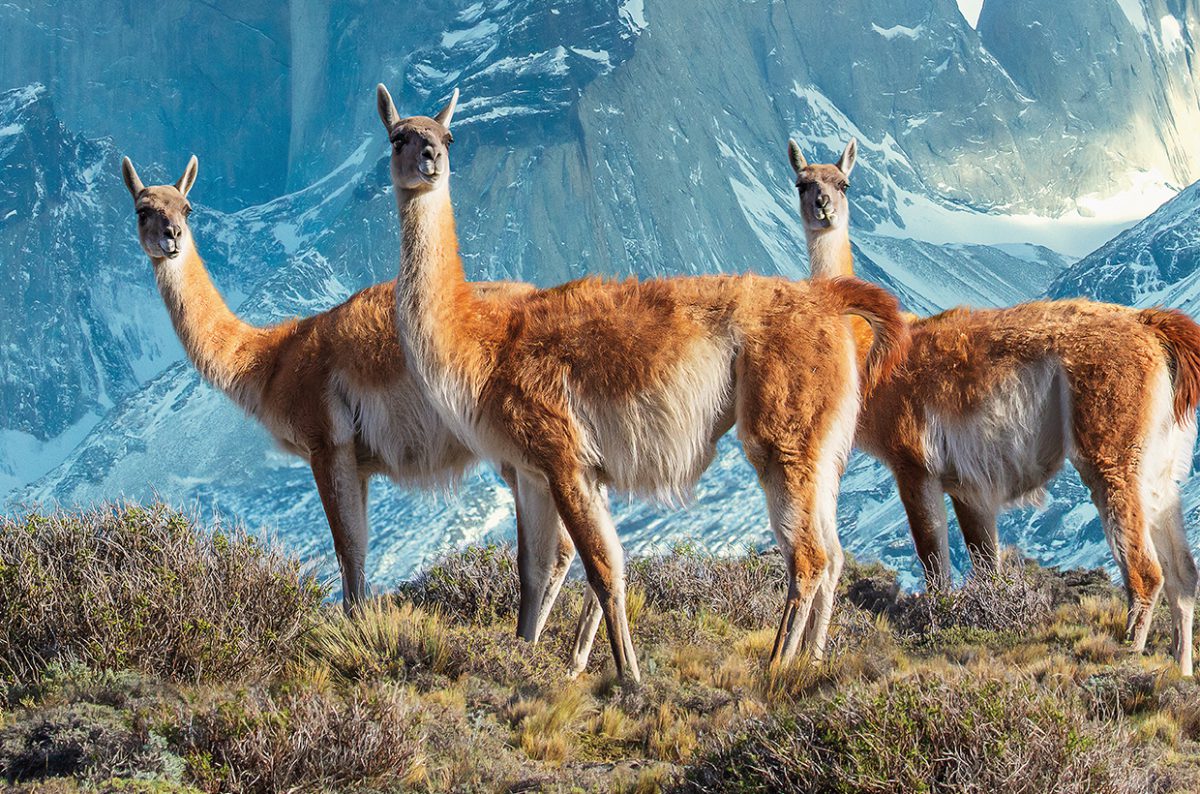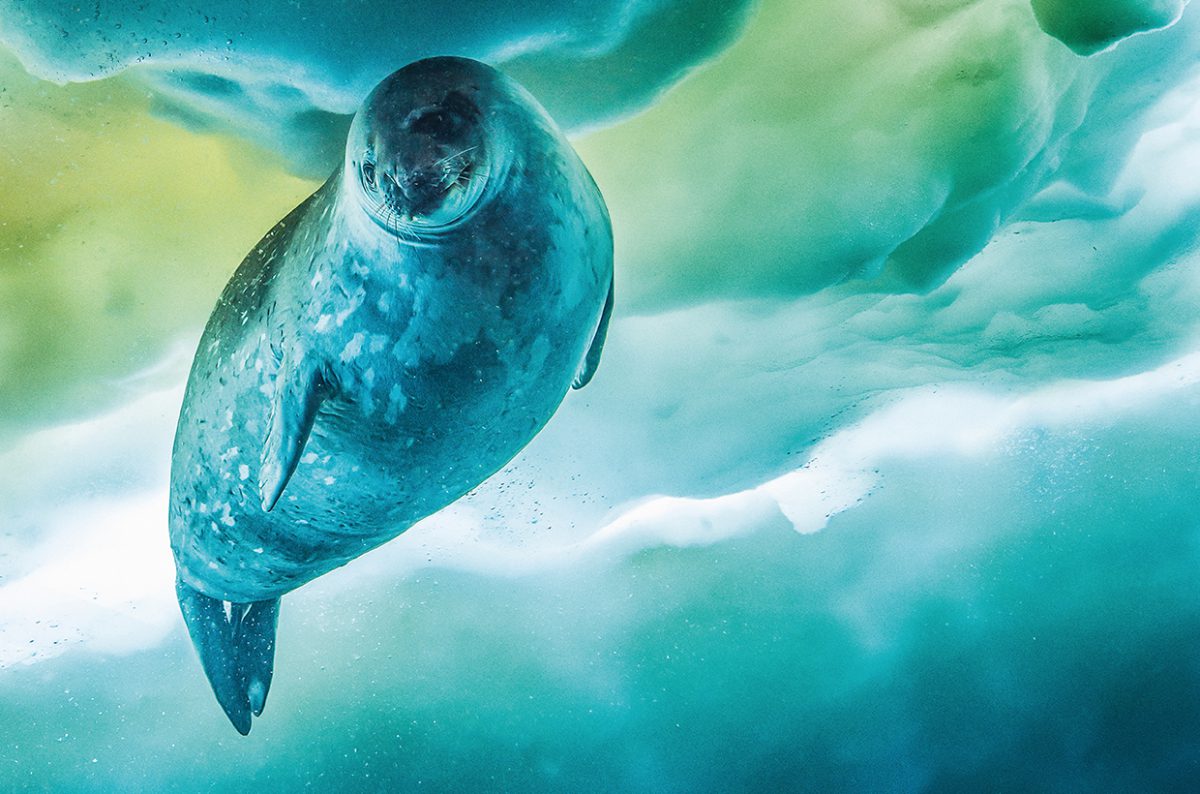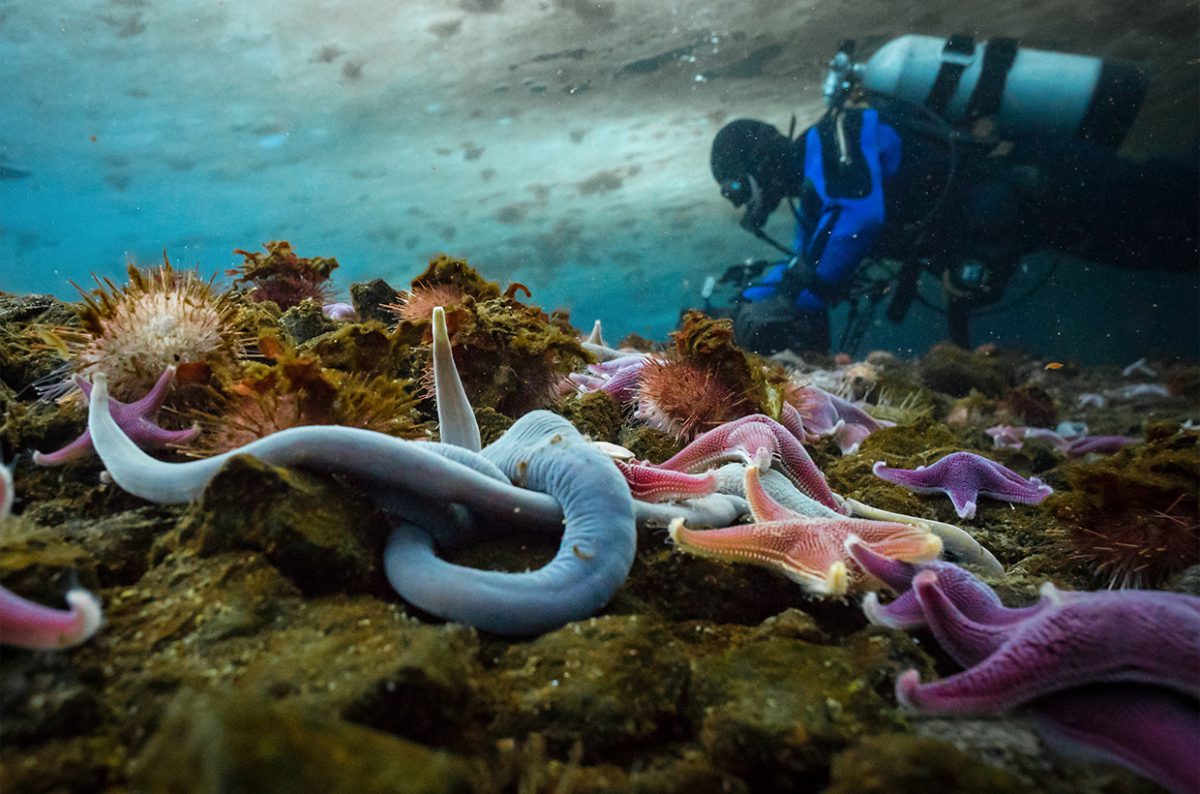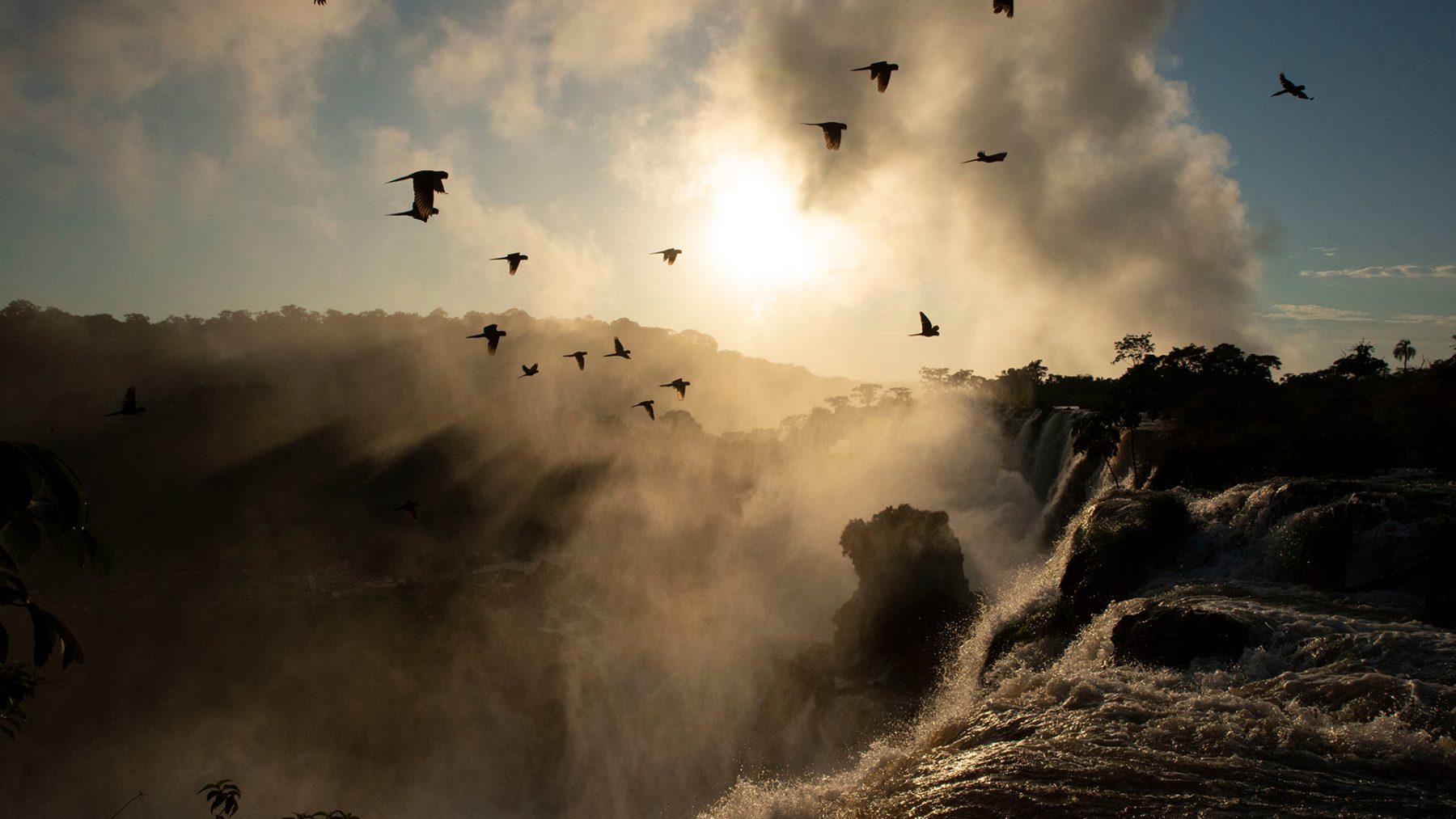David Attenborough by Patrick Barkham | 4th September, 2020 | Personalities
You could call him the good conscience of nature. Sir David Attenborough, now 94, has been advocating for a deeper understanding of the beauty of our planet for 70 consecutive years. Now the extraordinary natural historian has turned into an environmental activist.
In the late 1980s, a meeting was convened at the BBC studios on Whiteladies Road in Bristol, England. Its participants discussed the imminent retirement of a gray haired freelancer who had been working with the BBC for almost four decades. “We need to think about who is going to take over from David when this series is finished,” a junior producer, Mike Gunton, remembered his boss saying.
Sir David Attenborough was nearing 65 and putting the finishing touches to “The Trials of Life,” the third of his epic series about the natural world. These programs had been broadcast around the globe. They had established a new genre, perhaps even a new language of wildlife films. It was a fine legacy. Now it was time to go.
Now it was time to go. When Alastair Fothergill became head of the BBC Natural History Unit a few years later, executives were still worrying over the same question. The BBC director-general asked him to find a new David Attenborough. “I remember thinking, that’s not very sensible,” said Fothergill. “He has always been this great oak tree under which it’s been hard for a sapling to grow.” Today, Mike Gunton has ascended the ranks to become creative director of the Natural History Unit. He still attends meetings on Whiteladies Road. But, three decades after the subject was first broached, finding the next David Attenborough is no longer on the agenda. “We still haven’t got an answer and I don’t want one,” Gunton told me.
Attenborough was born on May 8, 1926, 17 days after the Queen. And, like the Queen, he has become a symbol of stability in a turbulent world. It is hard to imagine a time before he was on our screens, affably engaging with sloths or giant turtles – partly because there wasn’t. Television was invented the year after he was born, and only began to enter people’s homes in the 1950s, when he was beginning his career. The first program he made was watched by barely 10,000 people gazing at 405 flickering black-and-white lines on large boxes in living rooms in the southeast of England. In spring of 2019, his series “Our Planet” became Netflix’s most-watched original documentary, watched by 33 million people in its first month.
Attenborough and the Queen are more than just contemporaries. “I see them quite a lot,” Attenborough said of the royal family when I met him at his home in Richmond. He first encountered the Queen’s children, Charles and Anne, in 1958, when they toured the BBC’s Lime Grove studios and the young presenter introduced them to his pet cockatoo, Cocky. In 1986, the year after Attenborough was knighted, he produced the first of six Christmas broadcasts for the Queen. Last year, he was interviewed by Prince William on stage at Davos; the future king asked him for advice on how best to save the planet.
In our fractured age, Attenborough is the closest we have to a universally beloved public figure. Last year, a YouGov poll found him to be the most popular person in Britain. But Attenborough transcended national treasure status some years ago. He is a truly global figure now. So many Chinese viewers downloaded “Blue Planet II” that it temporarily slowed down the country’s internet, according to the Sunday Times.
As he moves from the White House to the World Economic Forum, urging presidents, businesspeople and the public to better protect the environment, he has come to be viewed, in a way he sees as overblown, as a keeper of humanity’s conscience. “There will never be another David Attenborough. What makes him special, apart from all his personal qualities, is the timing of his life,” said Fothergill. When Attenborough began traveling the world in the 1950s, Fothergill noted, we were in a different geological epoch, the Holocene. Today, we live in the Anthropocene, an epoch defined by Homo sapiens’ disruptive dominance of the planet. “He’s seen more of the natural world than any human being that has ever lived on the planet and he’s also seen more change than anyone else. And he feels a responsibility.”
Despite the adulation, one charge has dogged Attenborough for decades. Critics argue that he has built himself a unique storytelling platform, only to fail to tell the most important story of all: the destructive impact of people on the planet. But one reason Attenborough has thrived on screen for seven decades is because he has always sensed how attitudes are changing, and moved with the times. For a long time, he maintained that his programs must showcase the wonders of the natural world, and not speak of the human one. Now his newest series are filled with urgent messages about environmental destruction. Still, he resists the idea that he has changed; he prefers to say that it is the public mood that has transformed. After a lifetime of caution, almost despite himself, he has become a leading champion for action.
Attenborough fell in love with the natural world as a boy, exploring his way through his neighborhood in Leicester, looking for bugs, insects and amphibians. The middle child of three brothers, he grew up in a family of teachers. His father was principal of University College, Leicester. His mother was a talented pianist. Attenborough’s storytelling has been honed over seven decades in television – and he is, above all, a TV man. After studying natural sciences at Cambridge, he married his university sweetheart, Jane Oriel, and ditched his boring junior publishing job for the glamorous new world of television.
It took some time for Attenborough to realize what a threat humankind posed to the environment.
In 1954, Attenborough traveled to Sierra Leone with Jack Lester, London Zoo’s curator of reptiles, to film a new series, “Zoo Quest.” The concept was simple: they would watch wild animals – their bounty from Sierra Leone included pythons, bird-eating spiders and their big prize, the bald-headed rockfowl – and bring them back to London to add to the zoo’s collection. At the outset, Attenborough was the producer, director, sound man and animal wrangler. He only ended up being the presenter because Lester was taken ill after the first episode. Over the next few years, new series of “Zoo Quest” appeared and Attenborough’s reputation grew.
In 1965, he became controller of BBC Two, an appointment greeted with skepticism by “TV professionals” quoted in newspaper columns of the day. At first, he was considered lightweight, a youthful bit of eye-candy, but he was soon hailed for his “unexpected” success, as a Daily Express profile put it. As the channel’s controller and then director of programs for both BBC channels, Attenborough was a great innovator. Programs that emerged under his watch include “Dad’s Army,” “Porridge” and “Monty Python’s Flying Circus.” In 1972, he championed “community programming” that included what has been described as the first sympathetic portrayal of transgender people on British television.
Attenborough’s achievements at BBC Two made him a prime candidate for director-general, the top job at the corporation. But he was tiring of the senior executive’s life and in the early ’70s he resigned. He persuaded the BBC that he could create a “Civilisation”-style treatment of the evolution of plants and animals. This series took three years to make.
“Life on Earth” was broadcast for 55 minutes on 13 consecutive Sunday evenings in 1979. Despite the presence of a safari-suited Attenborough, binoculars around his neck, skipping between exotic locations, the early episodes often feel like a lecture with moving pictures. But as its epic story slowly unfolds, the series warms up. The writing is often superb: “Four million animals and plants in the world,” says Attenborough, “four million different solutions to staying alive.” The penultimate episode, on primates, features the first memorable Attenborough “two shot,” where he appears alongside another animal. He joins a grooming session among mountain gorillas in Rwanda, and still has the presence of mind to whisper: “There is more meaning and mutual understanding in exchanging a glance with a gorilla than any other animal I know.” Although some facts have changed – we now know there are more than 8 million species, not 4 million – the series stands the test of time.
„There is more meaning and mutual understanding in exchanging a glance with a gorilla than any other animal I know.“ SIR DAVID ATTENBOROUGH
For old-timers at the BBC, history is divided into before and after “Life on Earth.” The series established what television executives call the “blue-chip” natural history blockbuster. While the BBC has relinquished its dominance over most genres, it remains the pre-eminent maker of natural history programs, according to Fothergill. So much of that “is down to David,” he said. Much imitated, these blockbusters are still a huge global export: The BBC will not reveal what profit, if any, these series make, but “Planet Earth II” and “Blue Planet II” were sold to more than 235 territories.
After the success of “Life on Earth,” Attenborough spent much of the ’80s completing what became a triumvirate of blue-chip behemoths, with “The Living Planet” exploring ecology and “The Trials of Life” revealing animal behavior. He also turned his attention to series about less fashionable subjects: plants, spiders, stick insects and other invertebrates. Audiences liked his enthusiasm, his quick wit and his affection for animals.
By the early ’80s, Attenborough’s programs had been broadcast around the world and he became recognized wherever he went. But he was not yet, to use another label that vexes him, a global superstar. Until recently, when Attenborough’s series were shown on U.S. television, broadcasters would replace his narration with voices they thought an American audience would prefer. In 2010, when “Life” was broadcast in the U.S., Oprah Winfrey was the narrator.
Attenborough’s scripts are written by production teams, but he is an unusually rigorous editor and rewriter. Even today, Attenborough rewrites each script to fit his own turn of phrase and checks for accuracy. When filming, according to Mike Gunton, Attenborough does not learn his lines precisely. “He looks at it and comes back and says: ‘What do you think if I say it like this?’ His turn of phrase and the way he delivers these turns of phrase – it’s got such power. He has the same genes as his brother,” meaning Richard, the Oscar-winning actor-director, who died in 2014. “I’ve often said he’s as good a performer as his brother,” Gunton said.
By his own admission, it took some time for Attenborough to realize just what a threat humankind posed to the environment. When he was younger, he said, people knew of species that had gone or almost gone extinct, such as the Arabian oryx and the dodo, but “you didn’t perceive it as a major ecological problem. And in point of fact, let’s be honest, if the Hawaiian goose disappears, the world doesn’t actually judder in its revolutions.” It wasn’t until “Life on Earth” that he came to see that species decline was systemic and “actually the disappearance of the giant panda represented some major change.”
For most of his life, Attenborough’s environmentalism has been the old-fashioned, offscreen variety, lending his support to numerous green charities. Ever since he was asked, as a bit of a joke, to open a visitor center at a nature reserve by the village of Attenborough in Nottinghamshire, in 1966, he has given rousing speeches (I have seen several) at hundreds of events for nature charities across Britain. It is hard to find a visitor center at a Wildlife Trust nature reserve that does not feature a silver plaque declaring that it was “Opened by Sir David Attenborough.”
To his critics, these good deeds do not make up for what they see as Attenborough’s great failing as a broadcaster. Putting the case for the prosecution, the journalist George Monbiot has accused Attenborough of “knowingly creating a false impression of the world” by making films that underplay humanity’s impact on the planet and fail to identify the forces driving mass extinction and the climate crisis. Another environmentalist told me that Attenborough possesses irreproachable integrity, but his long silence on extinction and global warming in his television work has contributed towards a popular knowledge deficit.
As a young producer, it was drilled into Attenborough that private convictions must not be aired in public. He has always upheld the values of the liberal establishment and taken the traditional BBC line on party-political neutrality. “I’m not a political chap, I know about bugs,” he protested when asked about Brexit in 2017. (When pushed, he revealed that he voted to remain.)
Attenborough has also long defended his work with a “show the wonders and then people will care” argument. To a sympathetic observer, the lack of campaigning films in Attenborough’s oeuvre might look like a canny political calculation about the most effective way to shift popular opinion over the long term. But it may just reflect his temperament. “I made natural history programs not because I was a rampaging proselytizer preaching about conservation,” he told me. “I like looking at animals and seeing what they do.”
In November 2004, nearly 20 years after the phrase “global warming” was first coined, Attenborough attended a lecture in Belgium given by Ralph Cicerone, an American expert on atmospheric chemistry. The graphs that Cicerone presented, showing the rise in global temperatures, finally convinced Attenborough, beyond any doubt, that humans were responsible for the changing climate. Attenborough insists he was never a skeptic about man-made climate change; just cautious. Even after Cicerone’s lecture, he still believed his job was to make programs about wildlife. He worried that people would think he was setting himself up as an expert on climate science.
Attenborough’s output changed, however. This distinction may mystify those beyond the Natural History Unit, but its filmmakers distinguish between natural history and “environmental” filmmaking. The former focus on animal or plant biology and behavior; the latter address environmental issues. Attenborough’s 2006 BBC two-parter “The Truth About Climate Change” was his first to address global warming explicitly. Three years later came “How Many People Can Live on Planet Earth?,” which reflected his long standing concern over the rising human population. In 2019 came a new Attenborough BBC documentary, “Climate Change: The Facts.” This year, the BBC is broadcasting another, “Extinction: The Facts.” The arrival of “Blue Planet II” in 2017 heralded a new urgency to Attenborough’s blockbusters, helping transform popular attitudes towards waste and pollution with its images of plastic enveloping a turtle, and albatrosses unwittingly feeding plastic bags to their chicks. It explained the importance of rainforest for a habitable climate, and almost no stunning sequence of wild animals came without Attenborough emphasizing the precariousness of their continued existence. Likewise, in “Seven Worlds, One Planet,” the environmental messages are no longer restricted to an appeal at the end of each episode. The first story about the impact of climate change comes 16 minutes into the opening episode. Throughout, there are sequences that highlight the human actions –climate change, pollution, habitat destruction, poaching –causing Earth’s sixth great planetary extinction.
At 94, Attenborough is more in demand than ever. His daughter keeps a watchful eye on him and tries in vain to scale back his speaking engagements and charitable commitments. The BBC wants him to narrate “Planet Earth III,” but he will be 96 when the time comes. Meanwhile, he devotes most of his considerable stamina to appealing for radical action to tackle the climate crisis and biodiversity loss. In Poland, at the U.N. climate change summit in 2018, he was chosen to represent the world’s people in addressing leaders from almost 200 nations. At Davos, in early 2019, he questioned the wisdom of perpetual economic growth: only “a madman or an economist” would cling to this notion, he argued.
In fall of 2019, Attenborough launched “Seven Worlds, One Planet” with an exhausting round of interviews to journalists from six continents, while a police helicopter buzzed over Extinction Rebellion protests on the streets of London. At the premiere, when I asked if he was comfortable about his films inspiring Extinction Rebellion, he replied sharply: “Extinction Rebellion doesn’t have the monopoly of people who care about the planet. That’s a section of people who care about the planet, but everybody should care about the planet. We’re citizens of the planet. We have the dominance of it and we ought to care about it.”
Attenborough has been supportive of school climate strikers, and likes to suggest that the planet now belongs in younger hands. He remains visibly fascinated by all kinds of life and social change around him, but instinctively cleaves to the role of his lifetime – as an interested observer, watching a new generation clamoring for environmental change. “I’m old and they are young. They have their own techniques and their own ethos. It’s their world, not mine.”
